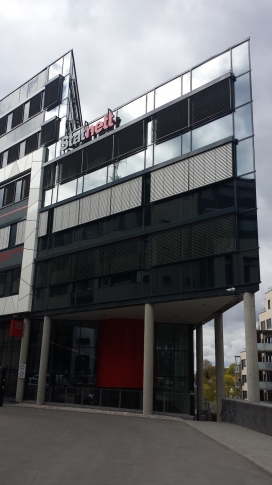News
2015-04-30
Meeting Statnett in Oslo
LIFE Elia team recently travelled to Norway in order to meet Statnett, the transmission system operator (TSO) of Norway. This meeting took place in Oslo on April 29th 2015 in the framework of our networking campaign launched in 2014. We strives to meet TSO for two main reasons : sharing experiences of alternative vegetation management and creating partnerships throughout Europe.

Meeting in Statnett office involving several partners
We were pleased to hold the meeting with Statnett in presence of partners involved in electricity transmission : representatives from the Norwegian Water Resources and Energy Directorate and researchers from the University.

People from the Grid Maintenance and from the Environment units attended the meeting. LIFE Elia presented the project, and the 7 actions toolbox that are tested in Belgium and France. We were now also able to present a glimpse of the results of our cost/benefit analysis.
On its side, Statnett gave us an overview of management of their 11.000 km long grid. Norway being mountainous from South to North of the country, mulching the vegetation is impossible due to the rocks and the slopes. The vegetation management of the 250.000 ha of forest corridors are achieved through manual clear cuts every 8-10-12 years, depending on the soil productivity and therefore the growing speed of vegetation under overhead lines.

In addition, intermediate operations can be undertaken according to standards of distance between cables and vegetation, ranging from 11 to 17 meters.
Statnett maintenance teams are sometimes confronted with problems when foresters proceed to clear cuts in the forest. They tend to leave a stripe of trees along the electrical corridor to avoid any accident during exploitation. But these "curtain" trees, not protected from winds anymore, can fall on the cables easily by strong wind conditions. Therefore, Statnett has to be very vigilant when forest works are undertaken around forest corridor
The type of vegetation is mainly composed of pines, spruces, birches and elms. In very low soil productivity, these trees are growing so slowly that they can be very old before they have to be removed from the corridor. Junipers are also preserved in the corridor, as it is done in Belgium in the LIFE project.
Visit in Sognsvann : a good example of peri-urban area
This HT line goes through a very popular area used by students and neighbours either to do sport or to spend some times relaxing during the week-end. Impact on landscape and on public perception have to be taken into account, although this site, close to Oslo, is not representing the majority of HT lines crossing forest areas with a low population density.

Vegetation is managed by manual clear cuts, and cut trees are left on the ground.

During open-minded talks on site, we had the opportunity to speak about our ideas to manage vegetation differently. Plantation of forest edges could be threaten by important densities of moose which could browsed young tenders plants. But an infrastructure of pasturing with sheep could be a good idea, both for reducing costs and for public interest. This site would be suitable for a pilot site we could launch together with Statnett.

We have also invited Statnett team to join us for our networking event in June 2015 in Belgium. We are looking forward to meet again and to develop the enthusiastic contact we had.

